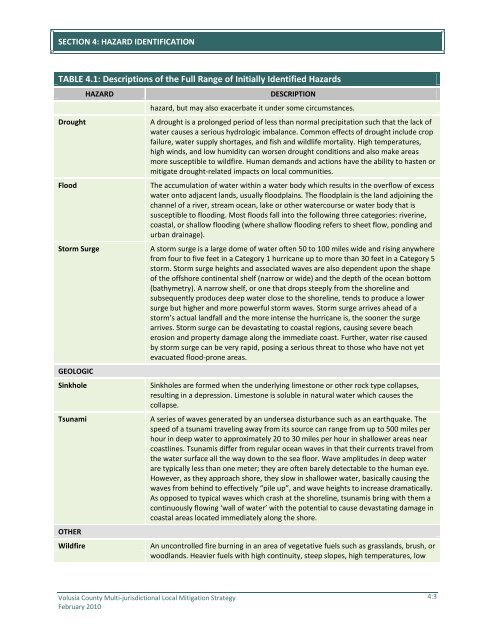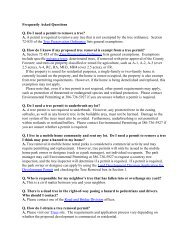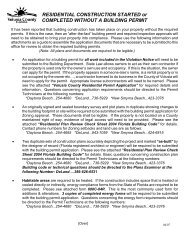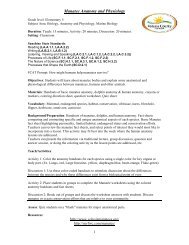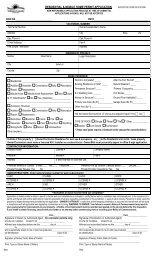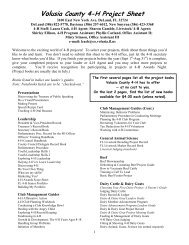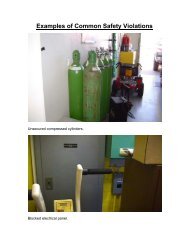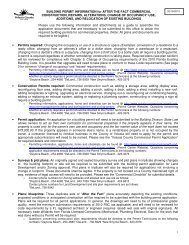Local mitigation strategy (LMS) - Volusia County Government
Local mitigation strategy (LMS) - Volusia County Government
Local mitigation strategy (LMS) - Volusia County Government
Create successful ePaper yourself
Turn your PDF publications into a flip-book with our unique Google optimized e-Paper software.
SECTION 4: HAZARD IDENTIFICATIONTABLE 4.1: Descriptions of the Full Range of Initially Identified HazardsDroughtFloodStorm SurgeGEOLOGICSinkholeTsunamiOTHERWildfireHAZARDDESCRIPTIONhazard, but may also exacerbate it under some circumstances.A drought is a prolonged period of less than normal precipitation such that the lack ofwater causes a serious hydrologic imbalance. Common effects of drought include cropfailure, water supply shortages, and fish and wildlife mortality. High temperatures,high winds, and low humidity can worsen drought conditions and also make areasmore susceptible to wildfire. Human demands and actions have the ability to hasten ormitigate drought-related impacts on local communities.The accumulation of water within a water body which results in the overflow of excesswater onto adjacent lands, usually floodplains. The floodplain is the land adjoining thechannel of a river, stream ocean, lake or other watercourse or water body that issusceptible to flooding. Most floods fall into the following three categories: riverine,coastal, or shallow flooding (where shallow flooding refers to sheet flow, ponding andurban drainage).A storm surge is a large dome of water often 50 to 100 miles wide and rising anywherefrom four to five feet in a Category 1 hurricane up to more than 30 feet in a Category 5storm. Storm surge heights and associated waves are also dependent upon the shapeof the offshore continental shelf (narrow or wide) and the depth of the ocean bottom(bathymetry). A narrow shelf, or one that drops steeply from the shoreline andsubsequently produces deep water close to the shoreline, tends to produce a lowersurge but higher and more powerful storm waves. Storm surge arrives ahead of astorm’s actual landfall and the more intense the hurricane is, the sooner the surgearrives. Storm surge can be devastating to coastal regions, causing severe beacherosion and property damage along the immediate coast. Further, water rise causedby storm surge can be very rapid, posing a serious threat to those who have not yetevacuated flood-prone areas.Sinkholes are formed when the underlying limestone or other rock type collapses,resulting in a depression. Limestone is soluble in natural water which causes thecollapse.A series of waves generated by an undersea disturbance such as an earthquake. Thespeed of a tsunami traveling away from its source can range from up to 500 miles perhour in deep water to approximately 20 to 30 miles per hour in shallower areas nearcoastlines. Tsunamis differ from regular ocean waves in that their currents travel fromthe water surface all the way down to the sea floor. Wave amplitudes in deep waterare typically less than one meter; they are often barely detectable to the human eye.However, as they approach shore, they slow in shallower water, basically causing thewaves from behind to effectively “pile up”, and wave heights to increase dramatically.As opposed to typical waves which crash at the shoreline, tsunamis bring with them acontinuously flowing ‘wall of water’ with the potential to cause devastating damage incoastal areas located immediately along the shore.An uncontrolled fire burning in an area of vegetative fuels such as grasslands, brush, orwoodlands. Heavier fuels with high continuity, steep slopes, high temperatures, low<strong>Volusia</strong> <strong>County</strong> Multi-jurisdictional <strong>Local</strong> Mitigation StrategyFebruary 20104:3


